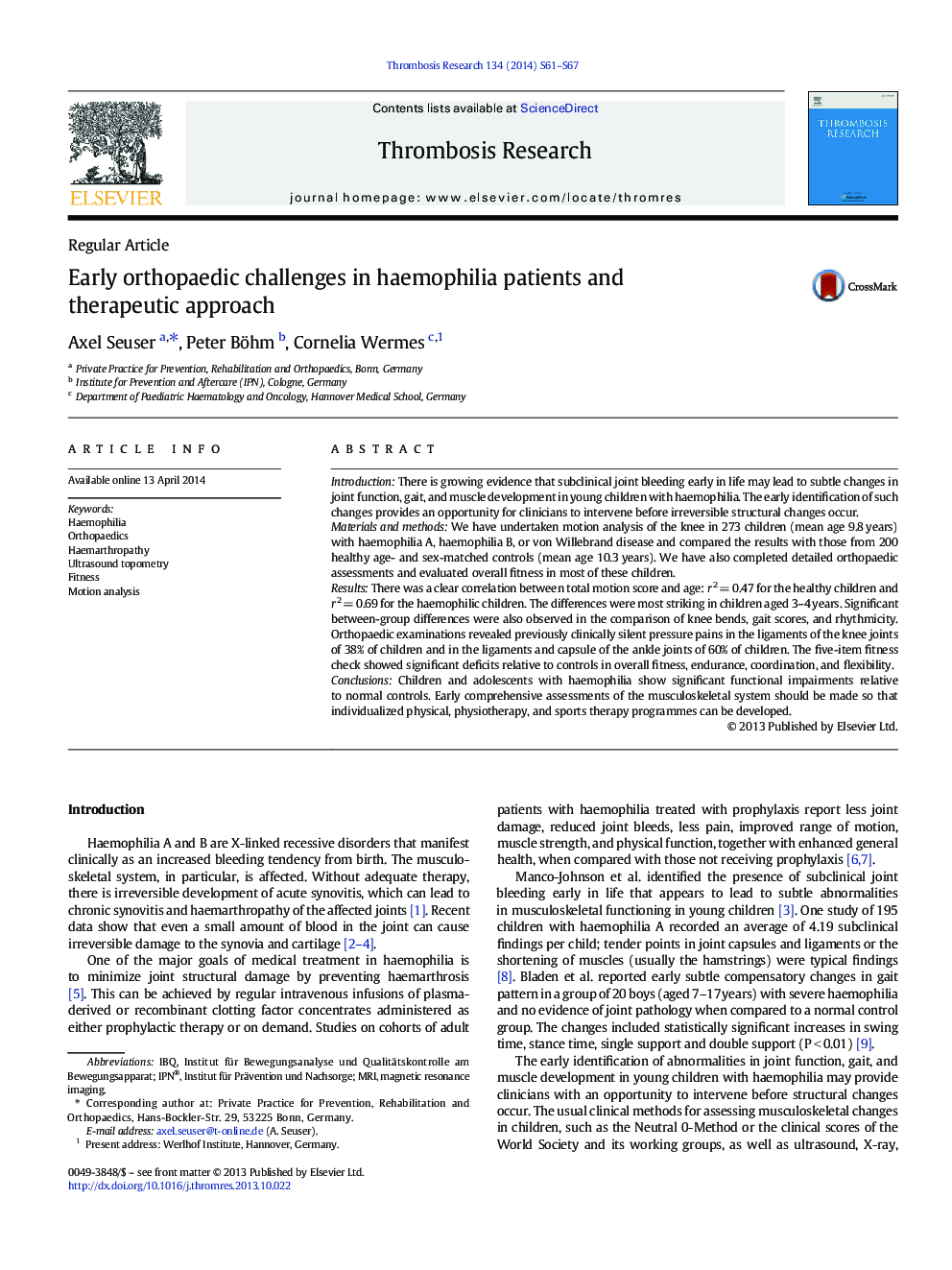| Article ID | Journal | Published Year | Pages | File Type |
|---|---|---|---|---|
| 3027169 | Thrombosis Research | 2014 | 7 Pages |
IntroductionThere is growing evidence that subclinical joint bleeding early in life may lead to subtle changes in joint function, gait, and muscle development in young children with haemophilia. The early identification of such changes provides an opportunity for clinicians to intervene before irreversible structural changes occur.Materials and methodsWe have undertaken motion analysis of the knee in 273 children (mean age 9.8 years) with haemophilia A, haemophilia B, or von Willebrand disease and compared the results with those from 200 healthy age- and sex-matched controls (mean age 10.3 years). We have also completed detailed orthopaedic assessments and evaluated overall fitness in most of these children.ResultsThere was a clear correlation between total motion score and age: r 2 = 0.47 for the healthy children and r 2 = 0.69 for the haemophilic children. The differences were most striking in children aged 3–4 years. Significant between-group differences were also observed in the comparison of knee bends, gait scores, and rhythmicity. Orthopaedic examinations revealed previously clinically silent pressure pains in the ligaments of the knee joints of 38% of children and in the ligaments and capsule of the ankle joints of 60% of children. The five-item fitness check showed significant deficits relative to controls in overall fitness, endurance, coordination, and flexibility.ConclusionsChildren and adolescents with haemophilia show significant functional impairments relative to normal controls. Early comprehensive assessments of the musculoskeletal system should be made so that individualized physical, physiotherapy, and sports therapy programmes can be developed.
